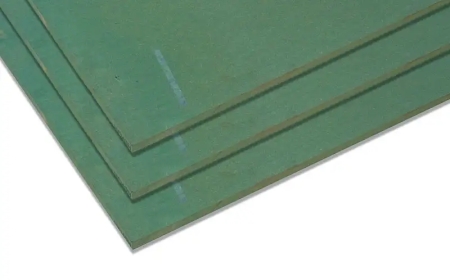What Journalists Look for in Your Story Pitch – An OC PR Firm Guide
Learn what journalists want in a story pitch and how an OC PR Firm helps brands craft newsworthy messages that media outlets pay attention to and act on.
What Journalists Actually Look for in Your Story Pitch An OC PR Firm's Guide
Introduction: The Gap Between Brands and Newsrooms
Many businesses struggle to get media coverage, not because they lack stories, but because they dont know how to frame them. Journalists receive hundreds of pitches weekly, most of which never get opened. So, what makes a journalist stop and read?
An OC PR Firm understands both sides of the conversationthe brands message and the newsrooms expectations. By helping clients present their stories in the right way, these firms increase the chances of landing valuable media placements. This guide breaks down what journalists actually look for in a pitch and how businesses can better position their narratives to stand out.
1. The Story Must Be Newsworthy
At the core of every pitch, there has to be news. Journalists arent interested in marketing messages; they want information that is relevant, timely, or impactful.
Key signs your pitch is newsworthy:
-
It relates to current events or trends
-
It affects a wide audience
-
It introduces something new or solves a problem
-
It features strong data or unique insight
-
It includes a credible source or expert
Before sending out a pitch, ask yourself: Would I want to read this if I werent part of the company?
2. Relevance to the Journalists Beat
Pitches must be tailored to the journalist's area of coverage, also known as their beat. Sending a story about healthcare innovation to someone covering lifestyle topics is a waste of everyones time.
Tips for matching relevance:
-
Research the journalists recent articles
-
Reference one of their past stories in your pitch
-
Explain why your story fits their audience
-
Dont pitch broad; pitch specific angles
An OC PR Firm typically maintains media lists with segmented contacts, which helps ensure better targeting and higher response rates.
3. A Strong, Clear Subject Line
Your email subject line is the headline of your pitch. It needs to grab attention without sounding like clickbait.
Elements of a good subject line:
-
Keep it under 10 words
-
Use active language
-
Highlight the core hook of the story
-
Avoid vague or promotional language
-
Include the most compelling angle first
Subject lines should offer value, not a sales pitch. Clarity and curiosity win.
4. A Compelling Lead Paragraph
Once a journalist opens the email, the first sentence decides if they keep reading. This is where your hook matters most.
How to craft a strong lead:
-
Get to the point in the first sentence
-
Summarize whats new and why it matters
-
Mention any timely relevance or data points
-
Include who, what, when, and whybriefly
-
Avoid filler language and self-promotion
A concise, punchy lead communicates that you understand how the media works, increasing trust and engagement.
5. Quotes That Add Value
Journalists often look for quotes that can be used directly in their stories. These should come from credible sources, such as a company founder, subject matter expert, or public figure.
Best practices for quotes:
-
Keep them short and meaningful
-
Avoid jargon or technical terms
-
Provide insight or opinionnot just fluff
-
Ensure the speaker is clearly identified
An OC PR Firm often helps draft and review quotes to ensure they sound authentic, not overly rehearsed or promotional.
6. Supporting Assets: Data, Visuals, and Links
Journalists appreciate pitches that come with helpful supporting materials. These extras make their job easier and can improve the chances of coverage.
Supporting assets to include:
-
Relevant statistics or studies
-
High-quality images (headshots, product shots)
-
Links to press kits or additional resources
-
Case studies or third-party validations
-
Contact details for interviews
Don't overload the pitchjust include what enhances the story.
7. Respectful Follow-Up (and When to Stop)
Persistence helps, but pestering doesnt. Journalists are busy and cant respond to every pitch. A single, respectful follow-up a few days after the initial email is acceptable.
Follow-up dos:
-
Keep it short and polite
-
Restate the story in one sentence
-
Offer to provide additional materials
-
Respect their time and inbox
Most OC PR Firm professionals advise clients to follow the one-and-done approach if theres no reply after the follow-upthen move on to another outlet.
8. What Journalists Avoid Instantly
There are certain red flags that cause journalists to delete pitches immediately.
Things that turn them off:
-
Generic mass emails with no personalization
-
Long-winded intros or heavy self-promotion
-
Vague subject lines
-
Attachments with no explanation
-
Overly salesy or one-sided language
The key is to sound like a helpful sourcenot a marketer. Journalists value people who understand the boundaries and goals of journalism.
Conclusion: Crafting Pitches That Earn Attention
Successful story pitches are rooted in clarity, timing, and genuine value. Journalists look for relevance, newsworthiness, and easy-to-use content that fits their audiences needs. Brands that take the time to understand this process will always stand out.
Working with pr firms in orange county can help companies bridge the gap between marketing goals and media expectations. These firms bring industry knowledge, media relationships, and editorial instincts that increase your chances of getting published. But whether you're working with a firm or handling PR internally, the rules remain the same: respect the journalist's time, offer real value, and lead with the storynot the brand.





































